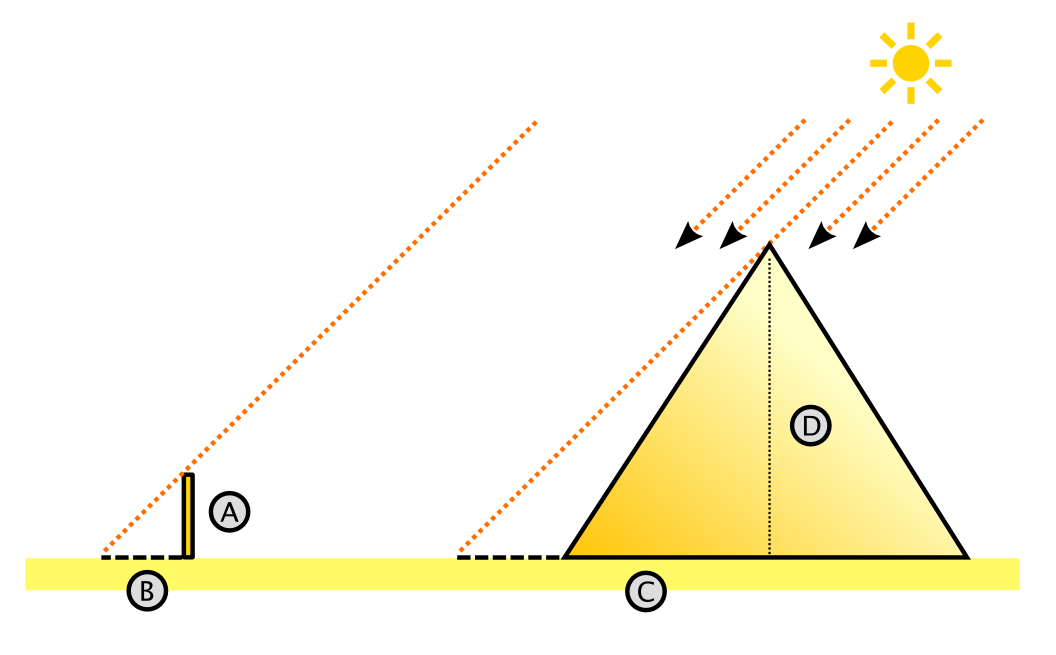Thales of Miletus (/ˈθeɪliːz/; Greek: Θαλῆς (ὁ Μῑλήσιος), Thalēs; c. 624 – c. 546 BC) was a pre-Socratic Greek philosopher, mathematician and astronomer from Miletus in Asia Minor (present-day Milet in Turkey). He was one of the Seven Sages of Greece. He travelled widely in the Mediterranean region, including to Egypt, which was long the dominant historical power in that area. Egypt of course is home to the great pyramids at Giza, which were already ancient, having been built more than two thousand years previously.

Thales asked the Egyptian about the height of the Great Pyramid of Cheops, but nobody knew the height of the Great Pyrami, so he set about measuring it himself. His method initiated a powerful approach in geometry - similar triangles.
Then, as the length of his own shadow was equal to his height, so the height of the pyramid was equal to the length of its shadow. That is to say, the pyramid's height was equal to the sum of half the side of its base and length of its exceeding shadow.

If height and length are equal, then they are directly proportional with constant of proportionality 1. Equivalently, he could calculate this directly:
d/c = b/a =1
So after he measured c, then he knew the height of the Pyramid (d)
His conclusion was that the height was about 481 feet, or 146.5 m.
Later, the Thales intercept theorem has been developed which is widely used for similar triangles.

Math story #1 - Han Xin Counting Soldiers (韓信點兵) (Remainder problem)
@binbin88/math-story-1-han-xin-counting-soldiers-remainder-problem-2017614t17355932z
